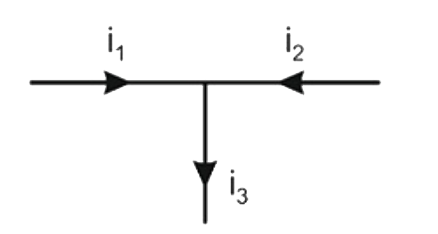x1=3sinωt,x2=4cosωt
Find (i) amplitude of resultant SHM.(ii) equation of the resultant SHM.
First write all SHM's in terms of sine functions with positive amplitude. Keep omegat withh positive sign.
∴x1=3sinωt
x2=4sin(ωt+π/2)
A=√32+42+2×3×4cos'π2=√9+16=√25=5
tanϕ=4sin'π23+4cos'π2=43,ϕ=53∘ equation x=5sin(ωt+53∘)
Topper's Solved these Questions
- SIMPLE HARMONIC MOTION BOOK - RESONANCE ENGLISHCHAPTER - SIMPLE HARMONIC MOTION EXERCISE - Solved Miscellaneous Problems
9 Videos
- SIMPLE HARMONIC MOTION BOOK - RESONANCE ENGLISHCHAPTER - SIMPLE HARMONIC MOTION EXERCISE - Board Level Exercise
24 Videos
- SEMICONDUCTORSBOOK - RESONANCE ENGLISHCHAPTER - SEMICONDUCTORSEXERCISE - Exercise 3
88 Videos
- TEST PAPERSBOOK - RESONANCE ENGLISHCHAPTER - TEST PAPERSEXERCISE - PHYSICS
784 Videos
Similar Questions
x1=3sinωt , x2=4cosωt. Find (i) amplitude of resultant SHM, (ii) equation of the resultant SHM.
View Solutionx1=3sinωt,x2=4cosωt
Find (i) amplitude of resultant SHM, (ii) equation of the resultant SHM.
View Solutionx1=3sinωt⇒x2=4cosωt. Find (i) amplitude of resultant SHm, (ii) equation of the resultant SHm.
View Solutionx1=5sin(ωt+30∘)
x2=10cos(ωt)
Find amplitude of resultant SHM.
View Solutionx1=5sinωt
x2=5sin(ωt+53∘)
x3=−10cosωt
Find amplitude of resultant SHM.
View Solutionx1=5sinωt
x2=5sin(ωt+53∘)
x3=−10cosωt
Find amplitude of resultant SHM.
View SolutionA particle is subjected to SHM as given by equations x1=A1sinωt and x2=A2sin(ωt+π/3).The maximum acceleration and amplitude of the resultant motion are it amax and A,respectively , then
View SolutionIf interference is complete or cent percent then the frequency of observed crossover will be
View SolutionEquations y1=Asinωtandy2=A2sinωt+A2cosωtrepresent S.H.M. The ratio of the amplitudes of the two motions is
View SolutionIn the given figure, if i1=3sinωtandi2=4cosωt, then i3 is

View Solution

